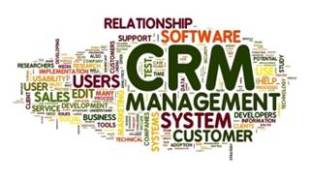I’m going to admit right from the start that I don’t have any industry or business to share. What I am going to share, however, is my 20 years of trying to configure CRMs from databases and using CRMs myself during that time.
I’m fairly new here at Soffront – I’m the marketing manager, so you know where I’m coming from and there’s no mistakes that I’m a bit partial. My first initiation to the early rudiments of CRM, although no one knew that acronym at the time, was circa ’92 or ’93 when I had to self-configure FileMaker Pro into a contact management and invoicing tool.
It took a long time to set up but it was good experience when CRMs did arrive on the market. Heck, I’ve been around long enough to use PageMaker when it was thought to be an innovative graphic design program. It wasn’t.
As a marketing guy who’s been around the block a couple times, I’ve used a lot of CRMs, old and new. I’ve used Goldmine, ACT, SalesForce and a couple others during the years. With ACT, I was able to send out mass emails, but the directions were like asking someone for directions at a small general store out in the country – turn left at the red barn, hang a right after a couple miles at Murphy’s pond and you know you’re getting close when you see the tire swing hanging from the maple tree on the right. Not the easiest thing in the world, but when you’ve been around long enough to remember DOS commands, it was doable.
And then you have your email programs – I’ve used Lyris (where our IT guy had to help us set up mass emails), SilverPop (very hit or miss) and Constant Contact (good for what it is, I guess). The problem was/is that the CRMs didn’t talk very well with Email programs which didn’t talk very well with the data. In Greek mythology there’s a tale about a hero who meets three sisters who share one eye amongst them – sometimes it felt like those sisters trying to get the CRM, the Email program and the data to handshake. I felt like I could’ve been a UN diplomat translating for international statesmen with that experience.
I admittedly didn’t know how competitive the CRM market was when I joined Soffront a few months ago. But the reason I joined the company because the product was such a revelation compared to what I’d had to make or use in the past. Here it was: CRM + Email Marketing + Service in one package. And the other great thing was the amount of email templates, the image library and scheduling options for all the different kinds of emails you can do – one-time blasts and sustained periodic campaigns. I’m not lying when I tell you I almost cried. I didn’t.
I showed a sales manager I worked with and he was floored too. He had worked with me at a previous company using ACT and Lyris and knew the “misery loves company” feeling very well also.
As I stated above, however, the CRM market is very crowded and as marketing people are wont to do, exaggerate claims about their product. You’re shocked, I know. If you’ve followed me this for this confessional or self-reflection of my own struggles through the land of CRM and Email marketing programs, I hope you’ve been able to relate a bit.
As the marketing guy for Soffront, I’d admittedly love for you to try and buy the product. Some of you may be able to remember Victor Kiam, the owner of Remington shavers, who’s tagline for the TV commercials he appeared in was, “I liked it (the Remington electric shaver) so much, I bought the company.” Now, I can’t buy a company but the reason I joined was because I was so impressed with the product and thought, as a marketer, I could get other people to try it and like it too. If one of you reads this blog and decides to give it a try, I’ve done my job. If a hundred read this and try it, I’ll definitely write more blogs.
Next blog I promise to share some third party industry or business news which I think will be valuable to you or at least hold your interest during your morning cup of coffee. But for now, this is it.









 I recently read an article that explains why so many companies eventually abandon their CRM software. Whether you’re a first-time buyer or changing to a new brand, it’s an issue worth considering before you make a commitment to a new or different application. And if you’re one of the many companies struggling with your current CRM system, you might want to examine your difficulties before giving up on CRM altogether.
I recently read an article that explains why so many companies eventually abandon their CRM software. Whether you’re a first-time buyer or changing to a new brand, it’s an issue worth considering before you make a commitment to a new or different application. And if you’re one of the many companies struggling with your current CRM system, you might want to examine your difficulties before giving up on CRM altogether.


